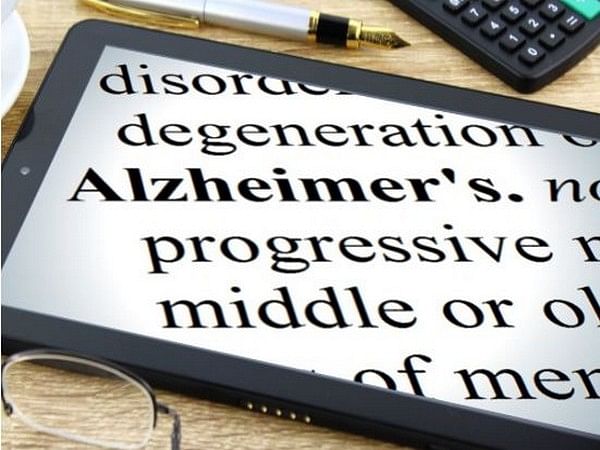Daejeon [South Korea], August 4 (ANI): Aduhelm, a monoclonal antibody that targets amyloid beta (A), was recently found by the US Food and Drug Administration as the first treatment for Alzheimer’s disease (AD). However, its impact on cognitive improvement is still debatable.
Moreover, about 40 per cent of the patients treated with this antibody experienced serious side effects including cerebral edemas (ARIA-E) and hemorrhages (ARIA-H) that are likely related to inflammatory responses in the brain when the Ab antibody binds Fc receptors (FCR) of immune cells such as microglia and macrophages. These inflammatory side effects can cause neuronal cell death and synapse elimination by activated microglia, and even have the potential to exacerbate cognitive impairment in AD patients. Thus, current Ab antibody-based immunotherapy holds the inherent risk of doing more harm than good due to their inflammatory side effects.
The findings of the study were published in the journal Nature Medicine.
To overcome these problems, a team of researchers at KAIST in South Korea has developed a novel fusion protein drug, aAb-Gas6, which efficiently eliminates Ab via an entirely different mechanism than Ab antibody-based immunotherapy. In a mouse model of AD, aAb-Gas6 not only removed Ab with higher potency, but also circumvented the neurotoxic inflammatory side effects associated with conventional antibody treatments.
“FcR activation by Ab targeting antibodies induces microglia-mediated Ab phagocytosis, but it also produces inflammatory signals, inevitably damaging brain tissues,” said paper authors Chan Hyuk Kim and Won-Suk Chung, associate professors in the Department of Biological Sciences at KAIST.
“Therefore, we utilized efferocytosis, a cellular process by which dead cells are removed by phagocytes as an alternative pathway for the clearance of Ab in the brain,” Prof. Kim and Chung said. “Efferocytosis is accompanied by anti-inflammatory responses to maintain tissue homeostasis. To exploit this process, we engineered Gas6, a soluble adaptor protein that mediates efferocytosis via TAM phagocytic receptors in such a way that its target specificity was redirected from dead cells to Ab plaques.”
The professors and their team demonstrated that the resulting aAb-Gas6 induced Ab engulfment by activating not only microglial but also astrocytic phagocytosis since TAM phagocytic receptors are highly expressed by these two major phagocytes in the brain. Importantly, aAb-Gas6 promoted the robust uptake of Ab without showing any signs of inflammation and neurotoxicity, which contrasts sharply with the treatment using an Ab monoclonal antibody. Moreover, they showed that aAb-Gas6 substantially reduced excessive synapse elimination by microglia, consequently leading to better behavioral rescues in AD model mice.
“By using a mouse model of cerebral amyloid angiopathy (CAA), a cerebrovascular disorder caused by the deposition of Ab within the walls of the brain’s blood vessels, we also showed that the intrathecal administration of Gas6 fusion protein significantly eliminated cerebrovascular amyloids, along with a reduction of microhemorrhages. These data demonstrate that aAb-Gas6 is a potent therapeutic agent in eliminating Ab without exacerbating CAA-related microhemorrhages.”
Professors Kim and Chung noted, “We believe our approach can be a breakthrough in treating AD without causing inflammatory side effects and synapse loss. Our approach holds promise as a novel therapeutic platform that is applicable to more than AD. By modifying the target-specificity of the fusion protein, the Gas6-fusion protein can be applied to various neurological disorders as well as autoimmune diseases affected by toxic molecules that should be removed without causing inflammatory responses.”
Professors Kim and Chung founded “Illimis Therapeutics” based on this strategy of designing chimeric Gas6 fusion proteins that would remove toxic aggregates from the nervous system. Through this company, they are planning to further develop various Gas6-fusion proteins not only for Ab but also for Tau to treat AD symptoms. (ANI)
This report is auto-generated from ANI news service. ThePrint holds no responsibility for its content.



